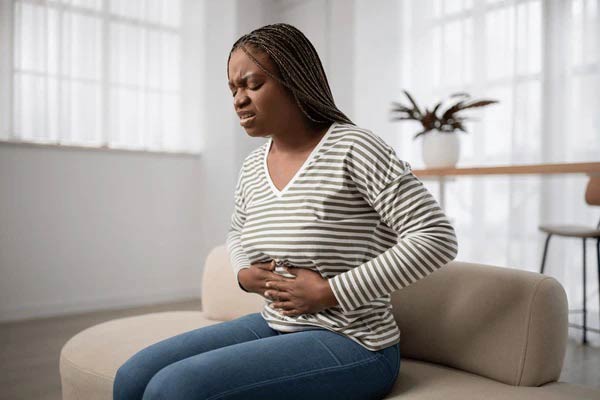
In an era where women’s empowerment and equality are celebrated, a silent struggle continues to disrupt the daily lives of millions of women worldwide—menstrual cramps. Often dismissed as a mere inconvenience, these pains, medically known as dysmenorrhea, have become a significant barrier to productivity, education and social engagement. As more women come forward with their experiences, it becomes clear that the impact of menstrual cramps extends far beyond physical discomfort, affecting every aspect of life. This begs the question: are all cramps dysmenorrhea? Should I seek medical attention?
According to several studies and surveys conducted over the past decade, there’s a consistent prevalence of dysmenorrhea affecting approximately 60-90% of adolescent girls and women of reproductive age. The American College of Obstetricians and Gynaecologists (ACOG) notes that these severe menstrual cramps are one of the most common gynaecological conditions, highlighting that while it’s difficult to pinpoint a precise increase in prevalence, it remains a significant issue.
In an interview with NTV Uganda, Dr. Othiniel Musana, a gynecologic oncologist at St. Francis Hospital Nsambya and president of the Association of Obstetricians and Gynaecologists of Uganda (AOGU), explained that while menstrual cramps are normal and common, severe pain warrants medical consultation. He noted, “The dynamics are changing and we tend to see more cases of dysmenorrhea than in the past 20-30 years.” Dr. Musana also pointed out that hormonal imbalances, particularly in young women during puberty, could exacerbate the severity of menstrual cramps with adverse symptoms like nausea.
One Uganda Christian University (UCU) alumna, who preferred to remain anonymous, shared her painful experiences, stating that she would often miss school due to severe cramps. She was diagnosed with endometrial hyperplasia, a condition where the uterine lining thickens abnormally. Treatment options, including hormonal IUDs, were recommended to manage her symptoms.
Victoria Nantambi, a recent graduate with a Bachelor of Nursing Science (BNS) from Uganda Christian University, highlighted the variation in menstrual cramp experience among women. She emphasised that cramps differ greatly from one woman to another; “One girl will tell you she has to be on medication every month, another will say they get cannulas to endure the pain, and then others may feel nothing at all.” She advised that diet and lifestyle play crucial roles in managing symptoms.
“Modern lifestyles, characterised by high-stress levels, irregular sleep patterns and unhealthy eating habits, may contribute to hormonal imbalances, hence intensifying menstrual pain. Additionally, exposures to environmental pollutants and endocrine-disrupting chemicals found in plastics, personal care products and food packaging can affect hormonal health,” Nantambi explained.
Menstrual cramps, as highlighted by the Mayo Clinic, can be exacerbated by conditions such as:
Endometriosis, where a tissue acting similarly to the lining of the uterus grows outside of the uterus, most commonly on fallopian tubes, ovaries, or the tissue lining your pelvis.
Uterine fibroids: These are noncancerous growths in the wall of the uterus that can cause pain.
Adenomyosis: where the tissue that lines your uterus begins to grow into the muscular walls of the uterus.
Pelvic inflammatory disease. Sexually transmitted bacteria usually cause this infection of the female reproductive organs.
Cervical stenosis. In some women, the opening of the cervix is small enough to impede menstrual flow, causing a painful increase in pressure within the uterus.
This rise of dysmenorrhea comes with significant implications for women’s quality of life. Severe dysmenorrhea can lead to absenteeism from work or school, reduced productivity and considerable emotional and physical distress. According to the National Institute of Health in Australia, a 2020 survey reported that 55% of women with severe menstrual cramps indicated that the pain interfered with their daily activities. Similarly, a 2018 survey by the National Institute of Health found that the rise of dysmenorrhea in Uganda was 75.8%, underscoring the widespread impact of this condition.
The National Institute of Health advocates for various treatments and interventions, including over-the-counter nonsteroidal anti-inflammatory drugs (NSAIDs) and hormonal contraceptives, which help regulate menstrual cycles and reduce pain. Alternative therapies such as acupuncture, yoga and dietary supplements like magnesium and omega-3 fatty acids are also recommended for managing menstrual pain.
Furthermore, NIH highlights the importance of clinician-patient shared decision-making in optimising treatment efficacy and ensuring patient satisfaction and adherence. Educating women about dysmenorrhea, its treatment options and potential adverse effects is essential to providing patient-centred care.
As menstrual cramps become more recognised as a significant health issue, there is a growing need for safety measures to address this challenge. By raising awareness, advancing research and offering effective treatment alternatives, we can better support women’s health and well-being.
If you find this content helpful, please consider joining our WhatsApp channel for more!